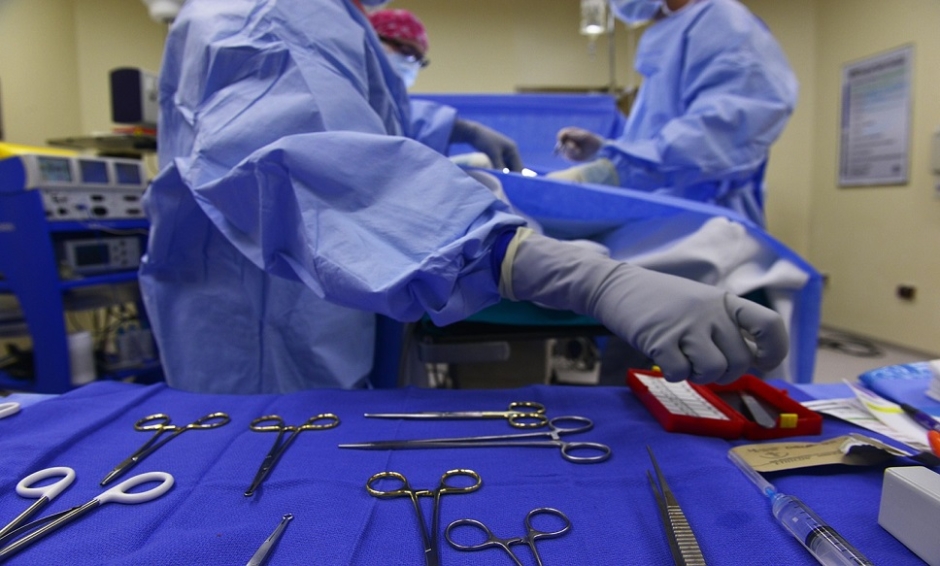20 to 30 percent of patients who have a knee replacement may experience persistent pain after surgery. Experts discussed how individualised multimodal approaches could be the key to making treatments more successful at a symposium staged in Dubrovnik by the European Pain Foundation EFIC.
Dubrovnik, September 22, 2016 – Many patients are disappointed and dissatisfied when they find they are still experiencing pain in the months and years after knee replacement surgery. “Chronic pain after a joint operation still remains a greatly underestimated phenomenon. An ever larger number of people are affected due to demographic changes and the increase in joint operations,” noted Henrik Kehlet, a professor from the University of Copenhagen in Denmark. Prof Kehlet was speaking at a symposium on acute and chronic joint pain staged in Dubrovnik by the European Pain Federation EFIC.
After the operation: more painkillers than beforehand
A European observational study found that twelve percent of patients report moderate to severe pain a year after a surgical intervention. After an artificial joint is implanted, the rate is estimated to be similar or higher, depending on the joint. Based on data from a systematic review including 17 cohort studies (Beswick et al. BMJ Open 2012; 2:e000435), the prevalence of chronic pain is nine percent after hip replacement and 20 percent after knee replacement.
Prof Kehlet: “More recent French, Swedish and Danish studies also prove that a surprising proportion of the patients continue with pain therapies or need even more painkillers after the surgical intervention than before it – and that cannot be the purpose of elaborate and expensive operations.”
20 percent experience chronic pain after knee replacement
Dr Vikki Wylde (University of Bristol, Great Britain) argues that these figures likely fall short of reflecting the full extent of the problem: “The current pain assessment tools do not always provide us with comprehensive information. In addition, research suggests that some individuals do not like to admit after surgery just how much pain they suffer because they do not want to seem ungrateful or because the pain after the operation may be a little less intense than before”. What is often overlooked in these cases is that the patients are not suffering from the original problems or acute postoperative pain that disappears after the wound heals. They are facing new complaints, as Dr Wylde highlights: “Twenty percent of the chronic pain following joint replacement surgery is of a neuropathic nature. Also chronic pain after surgery is often associated with pain elsewhere, suggesting a more widespread pain problem.”
Pain after knee replacement still an unresolved problem
As a result, some patients are frustrated and experience pain-related distress. Prof Kehlet: “Although our understanding of the causes and processes behind pain is increasing and surgeries can be performed more and more gently, patient care could still stand improvement.” In hip replacement surgery, the postoperative pain can be brought relatively effectively under control today with a multimodal therapy approach that includes analgesics such as paracetamol, COX-2 inhibitors, corticoids or rescue opioids. In the case of knee replacement, the pain poses a much bigger challenge because the knee is a more sensitive joint. Prof Kehlet: “We currently work with coxibes, NSAIDs, a high preoperative dose of corticoids and high volume local wound infiltrations with local anaesthetics. Others suggest improvement by ketamine for patients already receiving opioids preoperatively.” He advises against femoral nerve blocks because the patients are at risk of falling. “More peripheral nerve blocks are said to offer an effective option, but await further studies. Finally, the trending assumption that gabapentinoids is not clear when balancing efficacy versus side effects.“
Dr Wylde emphasized the following: “We have a lack of evidence-based treatments. A systematic review of randomised treatment trials (Beswick et al BMJ Open. 2015; 5: e007387) identified only a single trial which evaluated an injection of botulin toxin A in patients with chronic pain after knee replacement surgery. More research is needed in this field to help improve care for patients”.
Preventively filtering out pain-sensitive patients
Both experts see promise in a preventive, multidisciplinary approach. It should encompass, among other things, preoperative psychological treatment of patients who are depressed or extremely pessimistic prior to the surgery, the reduction of opioids or – as a new safety study for pre-emptive steroids suggests – use of steroids to desensitize the nociceptive system prior to the surgery. They also recommend tailoring the treatment more closely to the individual patients. Dr Wylde: “Chronic pain after joint replacement is multifactorial and therefore it is important that treatment is matched to patient characteristics. This requires a tailored and multidisciplinary approach to treatment”. Prof Kehlet also emphasized the importance of methods for identifying high pain responders for future analgesics studies: “Otherwise, the effectiveness data from the studies tells us much too little.” In this same context, an interesting approach that has not yet become routine involves preoperatively to examine white blood cells for their inflammation capacity, which, in turn, allows one to predict the risk of acute and chronic postoperative pain.
Individualised service
Dr Wylde: “Medical care of patients whose pain does not ease after their joint operation must be improved. There needs to be a clear entry into services, and standardised protocols to guide treatment.” To this end, standardised assessments are needed to find out the causes of pain. A personalised approach can then be taken to ensure patients receive the right treatment at the right time.
EFIC has declared 2016 to be the European Year against Joint Pain. The goal of this information campaign is to focus on a health problem from which more than half of the worldwide population over age 50 suffers. Against this background, experts attending the symposium in Dubrovnik are discussing the many current trends for understanding and treating joint pain.
Notes to the Editor
Source: EFIC 2016 – Topical Symposium on Acute and Chronic Joint Pain: Prof Henrik Kehlet; Dr Vikki Wylde
Media Contact
B&K – Bettschart&Kofler Kommunikationsberatung
Dr Birgit Kofler
Email: [email protected]
Tel: +43 676 6368930; +43 1 3194378 13; +49 176 35426750








